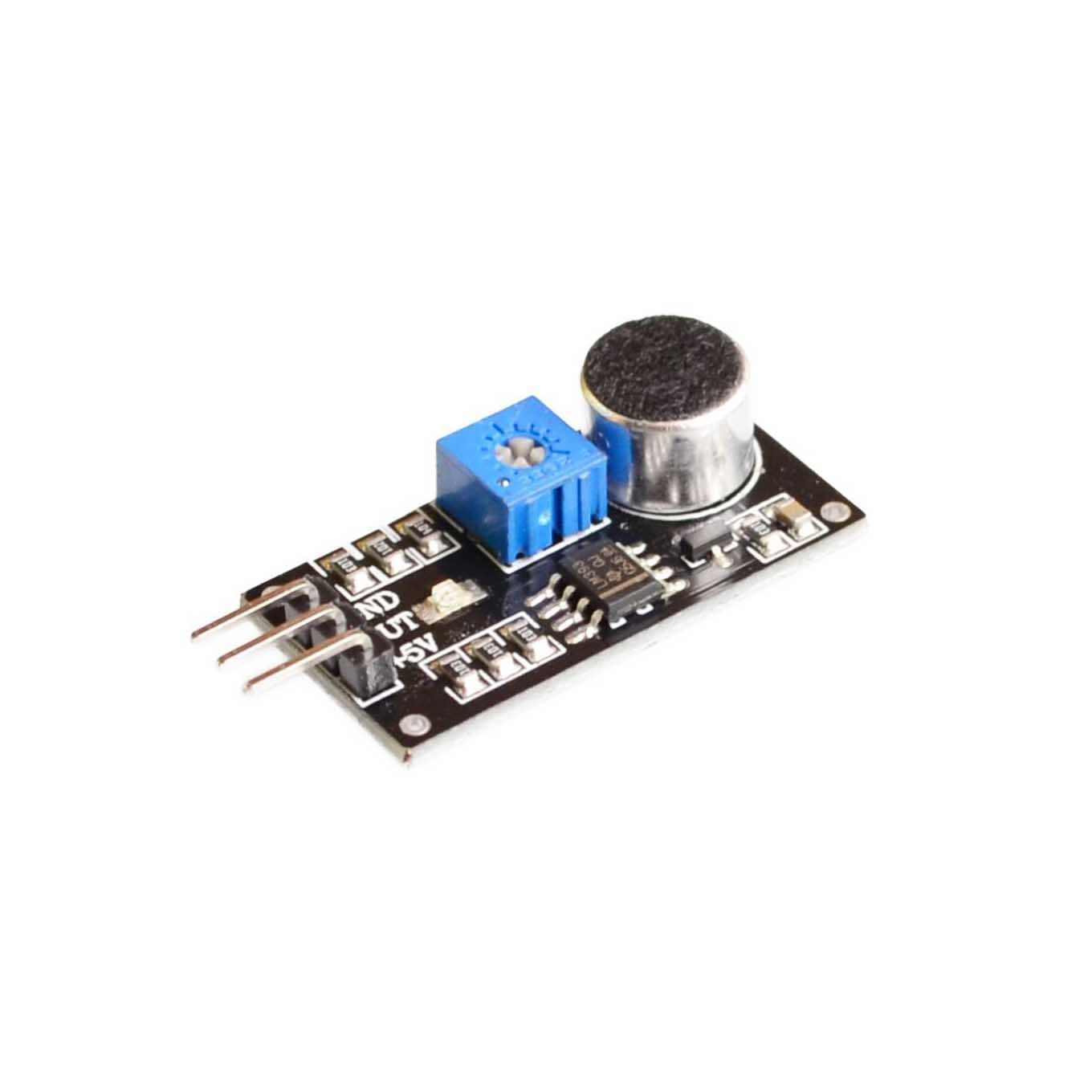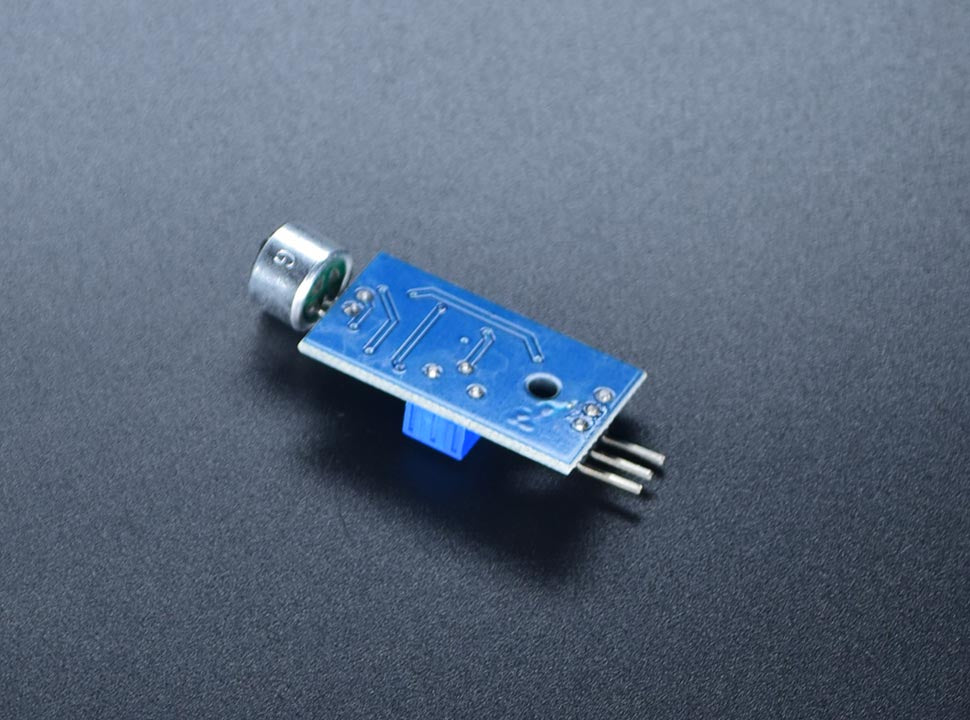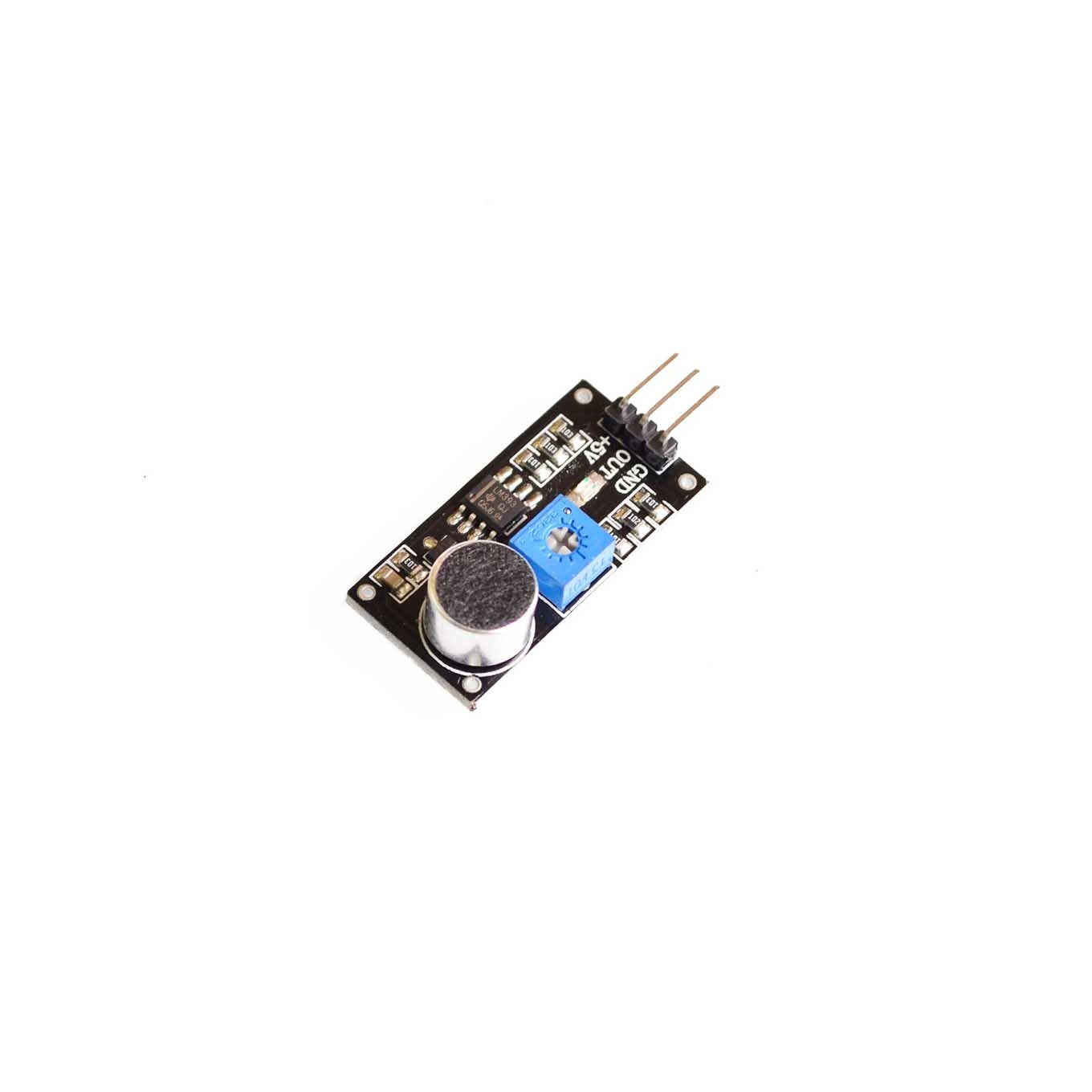Would you like to have sound detection for your project? Then this module is what you need. This sound sensor indicates if there is a sound that surpasses the threshold you have set. It is a versatile and user-friendly device designed to seamlessly integrate with Arduino and similar microcontroller platforms, making it an excellent choice for enthusiasts and professionals alike.
This module stands out for its dual-output functionality; it provides both analog output for capturing raw audio signals and digital output for detecting sound levels above a specific threshold. What makes this module particularly appealing is its adjustable sensitivity, thanks to an onboard potentiometer, allowing users to fine-tune the microphone's responsiveness to different ambient sounds. Equipped with an integrated electret microphone and an indicator LED that lights up upon sound detection, the LM386 offers both convenience and efficiency. Its compact design and low power consumption make it ideal for a wide array of applications, from sound-activated switches and noise level monitoring to security systems and interactive art installations. If you're looking to add sound detection capabilities to your projects with minimal hassle and maximum reliability, the LM386 Sound Sensor module is the perfect choice to enhance your creations and bring your innovative ideas to life.
We also have a MEMS version here.
Specifications:
- Voltage: 4 to 12V
- Low Quiescent Current Drain: 4 mA
- Adjustable Threshold
- Low Distortion: 0.2%(AV = 20, VS = 6 V, RL = 8 Ω, PO = 125 mW, f = 1 kHz)
TECHNICAL DETAILS
In the realm of DIY electronics and interactive projects, sound sensors are becoming increasingly popular. One such device is the sound sensor from Circuitrocks, a versatile tool that can be used in various applications, from hobbyist projects to advanced technology solutions. Here, we will delve into the features, uses, and benefits of this sound sensor, making it an ideal component for your next project.
What is a Sound Sensor?
At its core, a sound sensor is a device that detects sound levels and translates them into electrical signals. The Circuitrocks sound sensor is designed to pick up sound waves and convert them into analog signals, allowing for straightforward integration with microcontrollers like Arduino or Raspberry Pi. This makes it an ideal choice for enthusiasts and educators alike.
Key Features of Sound Sensor
- Analog Output: The Circuitrocks sound sensor provides an analog output, allowing you to monitor varying sound levels. This feature is crucial for projects that require precise sound measurement.
- Easy to Use: With a simple design, this sound sensor can be easily connected to various microcontroller boards. Its compatibility makes it a go-to choice for both beginners and experienced developers.
- Adjustable Sensitivity: The sensor includes an adjustable potentiometer, enabling users to customize the sensitivity according to their project needs. Whether you're working in a noisy environment or need to detect quieter sounds, this feature is invaluable.
- Compact Design: The small size of the sensor makes it easy to integrate into any project without taking up too much space. This compactness is particularly beneficial for wearable tech or embedded systems.
Applications of Sound Sensor
The applications of the Circuitrocks sound sensor are virtually limitless. Here are a few project ideas to inspire your creativity:
- Sound-Activated Lights: Create an interactive lighting system that responds to music or applause. By connecting the sound sensor to a microcontroller and a relay module, you can program lights to turn on or change colors based on sound levels.
- Noise Level Monitoring: Use the sensor to build a noise level monitor that can display decibel levels. This could be particularly useful in educational settings or workplaces where sound levels need to be controlled.
- Musical Instruments: Integrate the sound sensor into a homemade musical instrument that responds to sound in real-time. This can lead to innovative musical expressions and interactive performances.
- Home Automation: Implement the sound sensor in a smart home project where it can trigger devices based on sound input, like activating a fan when noise levels exceed a certain threshold.
Benefits of Using the Circuitrocks Sound Sensor
One of the most significant advantages of using the Circuitrocks sound sensor is its affordability combined with high functionality. It's an excellent entry point for beginners to learn about sound detection and its applications in electronics. Additionally, its reliability makes it suitable for more complex projects that require sound-based interactions.
Moreover, the online community surrounding Circuitrocks offers a wealth of resources, tutorials, and support for users, ensuring that even those new to electronics can find success with their projects.
Conclusion
The Circuitrocks sound sensor is a fantastic addition to any electronics toolkit. With its ease of use, adjustable sensitivity, and diverse applications, it opens up a world of possibilities for interactive projects.
Whether you're an educator, hobbyist, or professional developer, this sound sensor can help you bring your ideas to life in engaging and innovative ways. So, why wait? Dive into the world of sound detection and let your creativity flourish!
Sound Sensor LM386
Sound Sensor LM386
Out of stock
Product Code
SKU:2459
Couldn't load pickup availability








